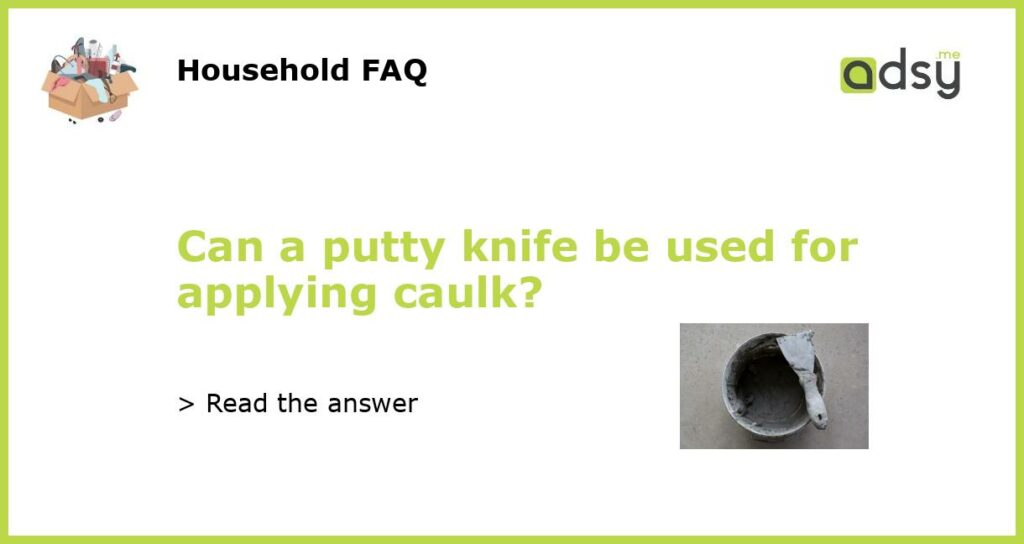Yes, a Putty Knife Can Be Used for Applying Caulk
When it comes to applying caulk, there are many different tools that can be used. While most people reach for a caulk gun or a caulking tool, it is also possible to use a putty knife for applying caulk. Putty knives are versatile tools commonly used for scraping, applying, and smoothing different substances, such as putty, spackle, and paint. In this article, we will explore how to use a putty knife for applying caulk, the benefits, and any potential drawbacks.
Why Use a Putty Knife for Applying Caulk?
Using a putty knife for applying caulk has several advantages. First, putty knives are typically inexpensive and widely available, making them a convenient tool to have on hand. Additionally, using a putty knife allows for greater control and precision during application. The flat, rigid blade of a putty knife makes it easier to create clean lines and smooth finishes. Putty knives also come in various sizes, offering flexibility to tackle different caulking projects.
How to Use a Putty Knife for Applying Caulk
To use a putty knife for applying caulk, you will need a few additional tools and materials:
- Caulk
- Caulk gun or a caulk tube with a built-in dispenser
- Caulk smoothing tool (optional)
- Painter’s tape (optional)
Once you have gathered these materials, follow these steps:
- Prepare the surface: Clean and dry the area where you will be applying the caulk. Remove any old caulk or loose debris.
- Load the caulk: If using a caulk gun, load the caulk into the gun by cutting the tip of the caulk tube and inserting it into the gun. If using a caulk tube with a built-in dispenser, skip this step.
- Apply the caulk: Place the tip of the caulk tube against the joint or gap you want to fill and apply steady pressure to dispense the caulk. Move the caulk gun or tube along the joint, applying an even bead of caulk.
- Smooth the caulk: Use the flat side of the putty knife to smooth and level the caulk. Hold the putty knife at a slight angle and drag it along the caulk line to remove any excess and create a neat finish. If preferred, you can also use a caulk smoothing tool for a more professional-looking result.
- Clean up: Before the caulk dries, remove any excess caulk from the putty knife using a cloth or paper towel. Wipe away any stray caulk from the surrounding area with a damp cloth.
Considerations and Potential Drawbacks
While a putty knife can be used for applying caulk, there are a few considerations to keep in mind. First, the size of the putty knife may not be suitable for all caulk application tasks. Larger gaps may require a wider-tipped tool or a caulking gun for efficient application. Additionally, using a putty knife may require more practice and skill to achieve a smooth finish compared to using a caulking tool.
It’s also important to note that using a putty knife for applying caulk may not provide the same level of durability and longevity as using a caulking gun. A caulking gun applies caulk with more pressure, ensuring better adhesion and a stronger bond. If durability is a concern, it may be worth investing in a caulking gun for larger or more demanding caulking projects.
Yes, a putty knife can be used for applying caulk. It is a versatile tool that provides greater control and precision during application. By following the steps outlined above, you can effectively use a putty knife to apply caulk and achieve a clean, professional finish. However, it is important to consider the size of the putty knife and the specific demands of the caulking project. For larger or more demanding tasks, a caulking gun may be a more suitable option. Regardless of the tool chosen, proper surface preparation and technique are key to a successful caulk application.






